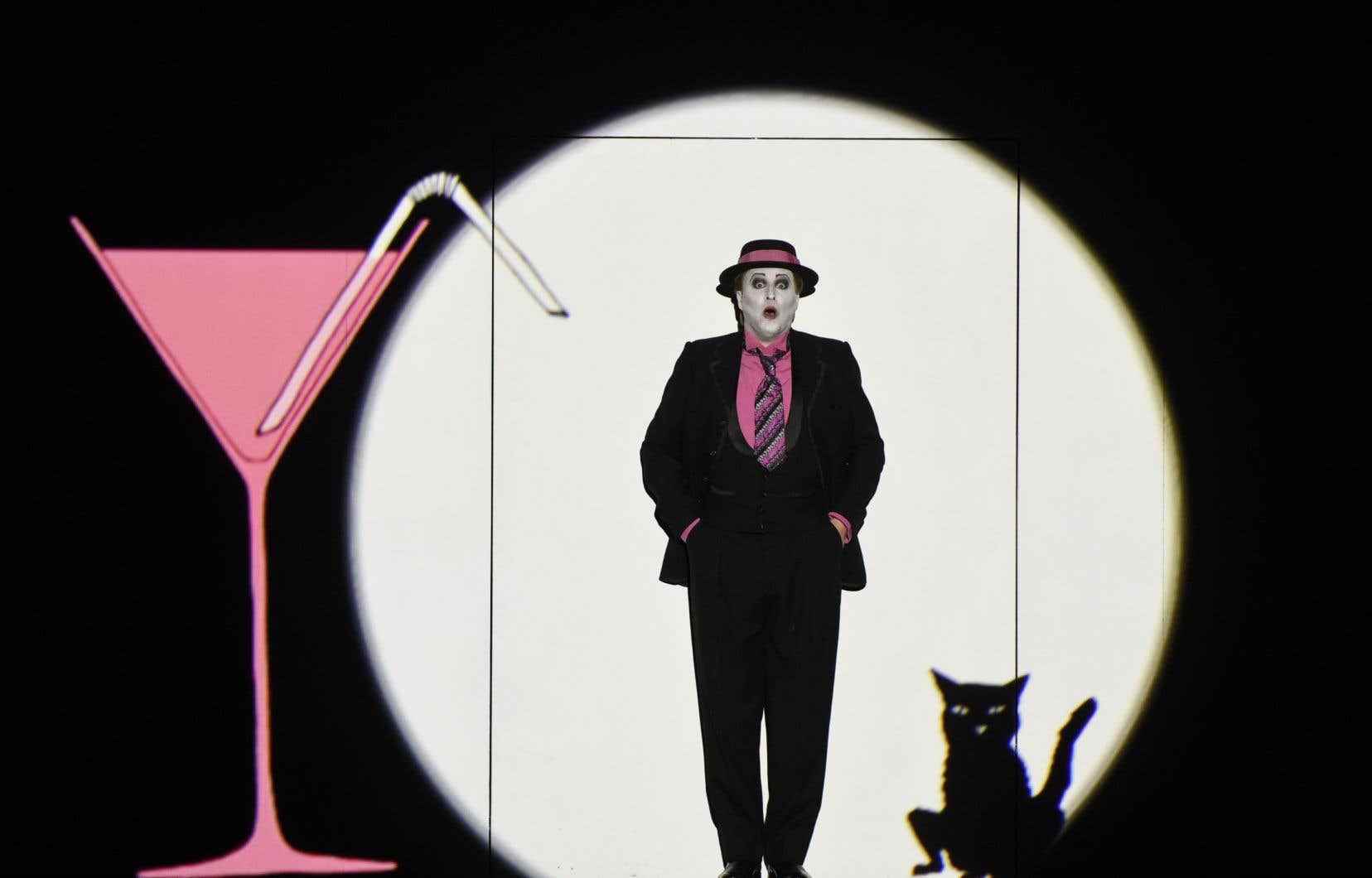The magic flute at 2 million dollars from Berlin which was shown at the Opéra de Montréal is currently the most exported in the world. A tribute to German expressionist cinema, its very clever device of animated projections becomes, ultimatelythe subject of the evening.
If the opera has always bored you, if you want to see pink elephants in garter belts flying on the big screen or if you are a fan of German silent cinema from the 1920s, only one address: Salle Wilfrid-Pelletier in the coming week.
However, you will sometimes have a little trouble making the connection with Mozart, knowing why the flute is a dragonfly with the head of a woman and why we play the Fantasy in D minor K. 397 (the tone of Requiem !) on an amplified piano during the dialogues transformed into intertitles. The Opéra de Montréal (OdM) no longer distributes programs (formerly, a health precaution without reason today), and that does not make things easier. Admittedly, you can scan a QR code with your phone, but since you have to turn off the phone in the room… It’s perhaps a way of making us experience a shock between surrealism and expressionism.
It is very difficult to comment on all of this without first taking a journalistic look at this ” magic flute of Barrie Kosky” that we are being bragged about. For the uninitiated, Barrie Kosky has become the very fashionable “enfant terrible” of the opera world in recent years. He is here “director”. Is credited, as co-director and co-creator, Suzanne Andrade. Paul Barritt’s name wasn’t even mentioned in the press release, despite being the designer of the whole ” show “: the designer of the projections that make up the essence of this Flute ! Here is the organization chart for 2012 published in the program of the Comic Opera Berlin. Directed by: Suzanne Andrade and Barrie Kosky; facilitator: Paul Barritt; show design: 1927 and Barrie Kosky; scenography: Esther Bialas; dramaturgy: Ulrich Lenz. All this is attested to by the site of the English Collective 1927 and period interviews available on YouTube: the Collective 1927 (Andrade and Barritt) was hired by Kosky, director of the Berlin Comic Opera, who helped to refine the show.
Is the marginalization of the main designers of the show a detail? Not at all. According to Suzanne Andrade, 1927 knew nothing about opera and had never heard of The Magic Flute, which she considers a banal love story written in an afternoon with ridiculous characters. The name of the collective, 1927, refers to the year of transition between silent and talkies. To feel comfortable, Andrade and Barritt have therefore transposed the opera into their favorite universe. The mute being what it is, the dialogues, which in any case bored Andrade, could not have room. Hence the addition of intertitles. The contribution of Kosky being for example, according to an interview of the time, the addition of other music by Mozart to furnish these intertitles.
A more recent contribution from Kosky was however revealed in our interview with the director of the OdM on Friday: Kosky imposed on the OdM the singers whom he knows will move well in the projection system!
Is this what we owe to having stuffed ourselves (instead of Frédéric Antoun or Andrew Haji, natural Canadian choices) a tenor of 5and zone who was playing his Tamino without a vocal line, but knew how to kick a virtual spider perfectly at the right time? In the vocal compromise series, Sarastro is mediocre and Monostatos (disguised as Nosferatu) even worse.
Swiss clock cuckoo clocks
Papageno sings correctly, but the Buster Keaton-type humor gives him an undertaker-like air that is the antithesis of the character’s candid joviality. The Queen of the Night is very correct, the set being notably enhanced by Kim-Lillian Strebel’s Pamina and the three Ladies (Alexandra Núñez, Kirsten LeBlanc and Florence Bourget: an OdM cast, thank you!). Chef Christopher Allen handled it with dexterity.
The management of projections, a neuralgic point, which went well, becomes the subject of the show, this or that visual prowess making the spectators laugh, including during the suicide scenes. On the theater side, we will come back since the characters do not exist: they are automatons that come out of various wardrobes like cuckoo clocks from Swiss clocks. We will not dwell on the harmonic transitions between the musical inserts and the score, nor on the narrative shortcuts.
Now that we have seen the technological prowess, of which, in fact, the two qualities are the unbridled creativity of a phenomenon called Paul Barritt (the table of the alignment of the 3 cards in the tune of the revenge of the Queen of the night is a masterpiece) and the possibility thus generated of attracting spectators who would not go to see a traditional opera, we intend to return to Mozart the next time, for example with the magical staging of Lepage or the visionary transposition of Barbe and Doucet. We will then go beyond the pretty, entertaining and vain talk about a hysterical spider stepmother who wants to kill the world and marry her daughter to Nosferatu out of revenge while a guy in a top hat, probably his ex, submits two robotic lovers to incomprehensible trials before marrying them.
